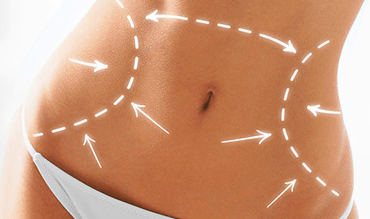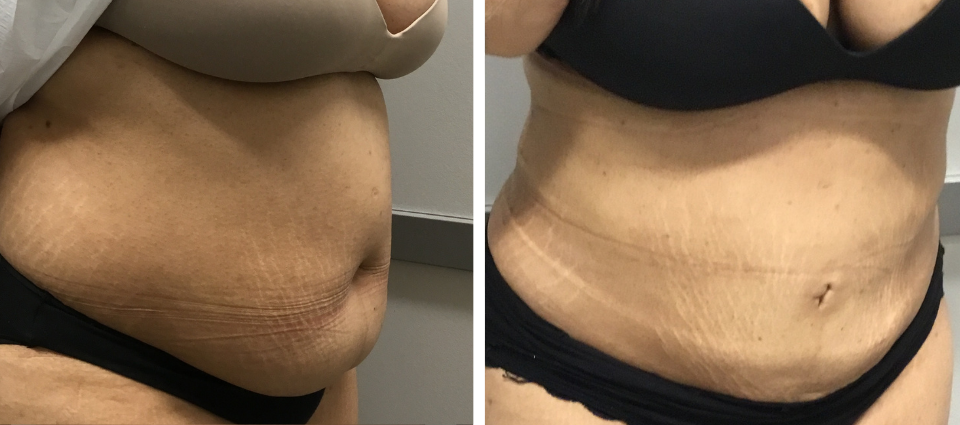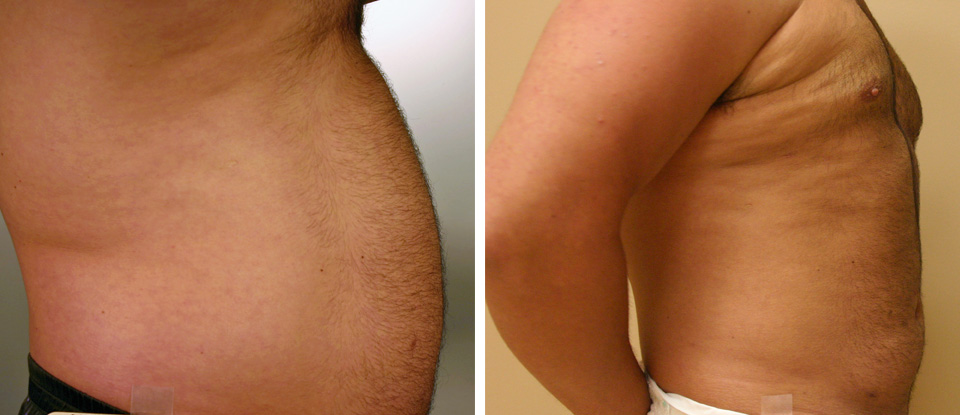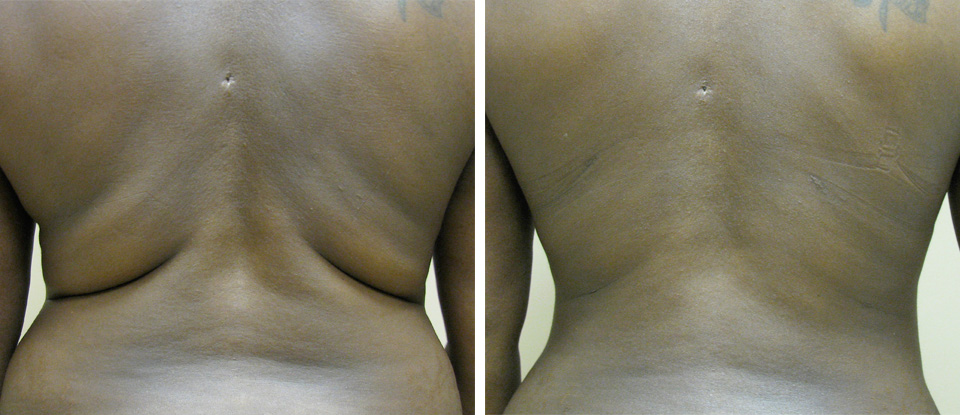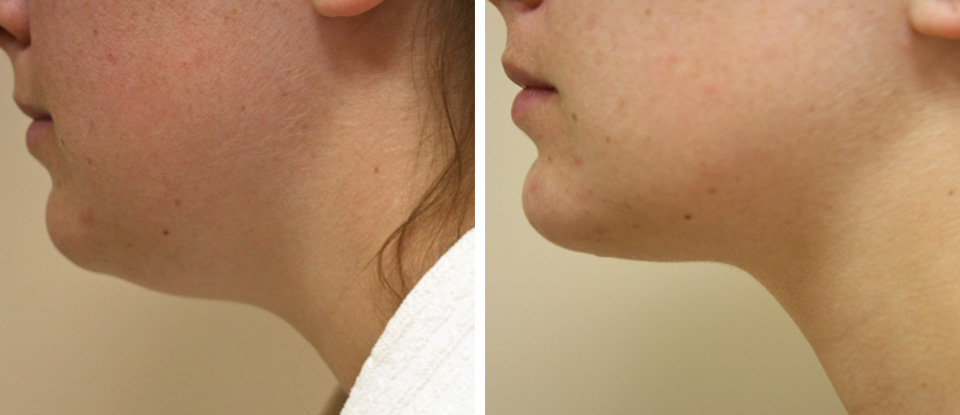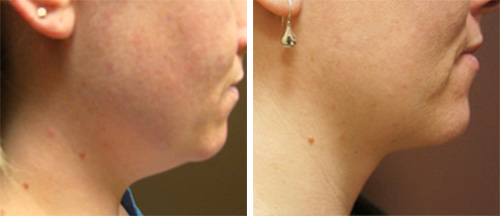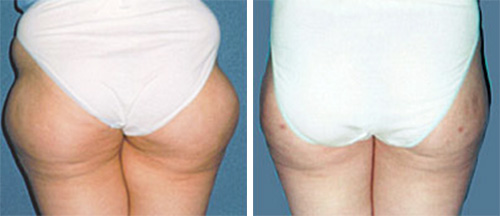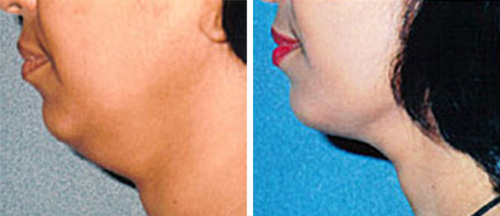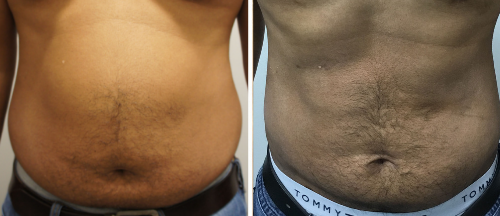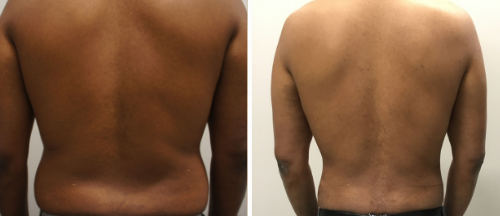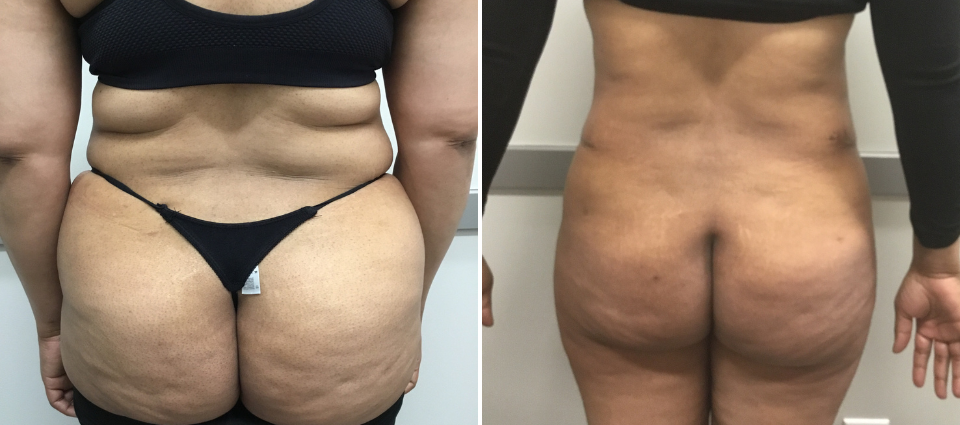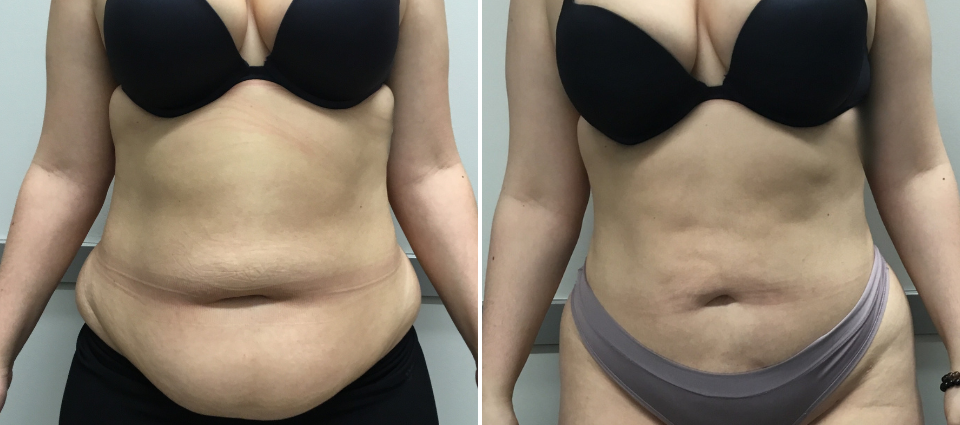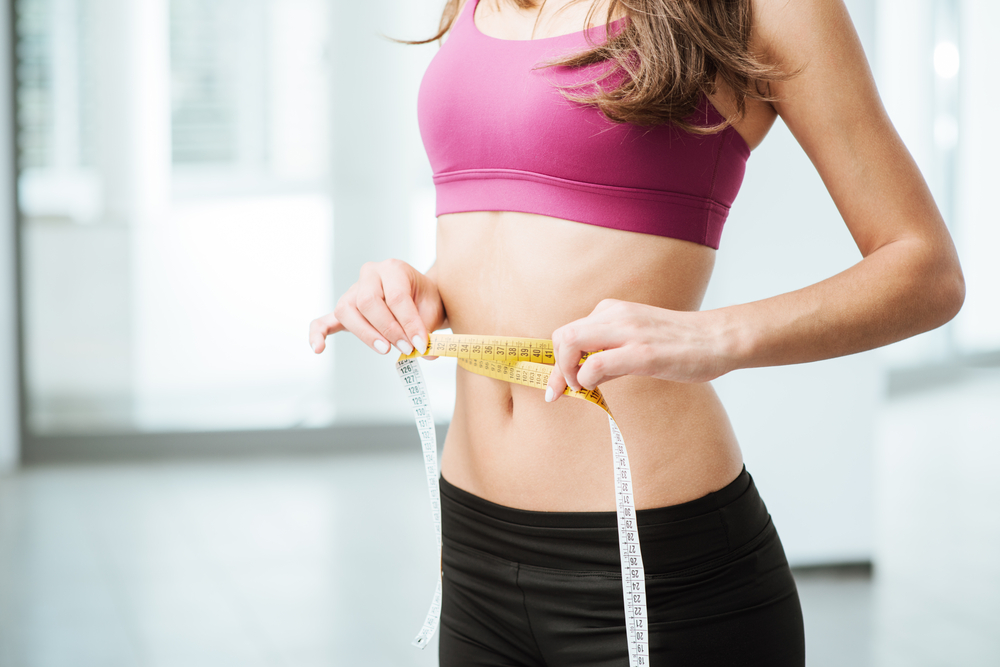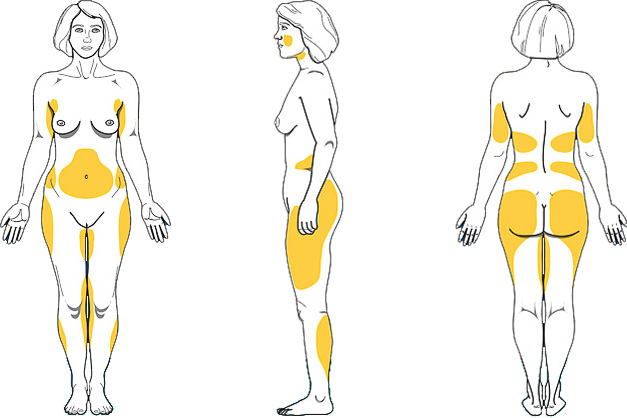Learn all about liposuction procedures below. If you’re looking for a liposuction procedure in Brampton, Mississauga, or the GTA area, contact the Brampton Cosmetic Surgery Center & Medical Spa team to book a consultation and confirm if this procedure is right for you.
What You Need to Know about Liposuction
| Overview | Liposuction permanently removes excess fat in cosmetically important areas to sculpt an improved body contour. |
| Also Known As | This type of procedure is sometimes referred to as lipoplasty or liposculpture. |
| The Ideal Candidate | Someone who has already reached (or neared) their ideal weight but still has stubborn fat in a few key spots. |
| Target Areas | Hips, abdomen, arms, thighs, love handles, chest, buttocks, and neckline (around the chin). |
| Average Cost | $2,500 – $9,900 + HST |
| Recovery |
|
| Overview |
| Liposuction permanently removes excess fat in cosmetically important areas to sculpt an improved body contour. |
| The Ideal Candidate |
| Someone who has already reached (or neared) their ideal weight but still has stubborn fat in a few key spots. |
| Target Areas |
| Hips, abdomen, arms, thighs, love handles, chest, buttocks, and neckline (around the chin). |
| Average Cost |
| $2,500 – $9,900 + HST |
| Recovery |
|
Find Out If Liposuction Will Be Right for You
What Is Liposuction?
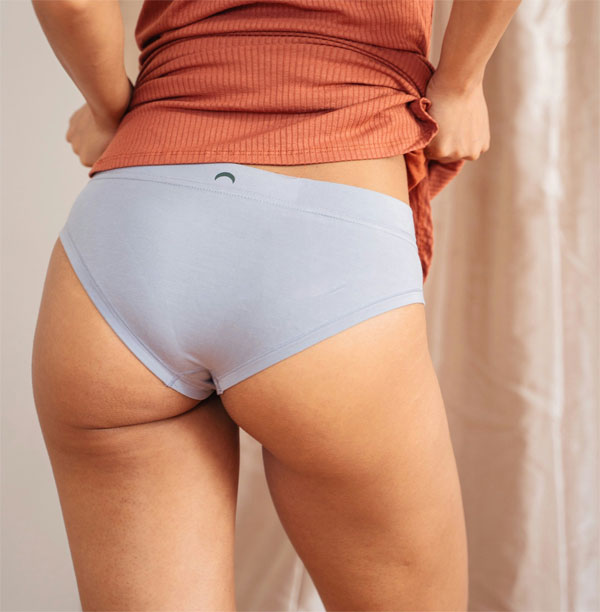
Some of the most commonly targeted areas include:
- Hips
- Abdomen
- Arms
- Thighs
- Love handles
- Spots around the chest
- Buttocks
- Neckline (and areas around the chin)
It’s important to understand that liposuction is not a weight-loss solution and can’t remove cellulite, stretch marks, or dimples. Instead, liposuction is meant to aid you on the last stretch of your journey—enhancing your shape and getting rid of undesirable fat in cosmetically important areas.
Why Do People Undergo Liposuction Surgery?
The most common reason people undergo liposuction is to do away with unshakeable fat that they have not been able to lose through healthy dieting and exercising.
Liposuction can also be used to address conditions including:
- Gynecomastia: In some cases, men can experience an abnormal enlargement of their breast tissue caused by an accumulation of fat. This problem can cause significant social stress and body-image anxieties. Liposuction (as part of a male breast reduction) can relieve nervousness and restore confidence.
- Lymphedema: This chronic condition causes excess fluid to collect in tissues, which results in swelling especially in a person’s extremities (arms and legs). In some cases, liposuction can help to reduce inflammation and pain.
- Lipodystrophy Syndrome: This causes fat to be gained in one part of a person’s body while being lost in others. Liposuction can target these affected areas to create a more natural looking distribution of body fat.
- Lipomas: These types of benign fatty tumours can sometimes be removed (or at least minimized) with liposuction.
Whatever the individual reason, the thread connecting anyone interested in liposuction is a desire to eliminate unwanted fat in one or a few spots and reshape their figure.
Who Is a Good Candidate for Liposuction?
Liposuction isn’t suitable for people whose aim is to lose weight. It works by targeting subcutaneous fat, which is located directly under the skin. It can’t remove visceral fat, the hard abdominal fat that surrounds the organs, or tighten skin.
The ideal candidates are people have already reached or neared their desired weight, but find themselves dogged by:
- Fat deposits on their chest, belly, hips, thighs, or arms that haven’t responded to exercise and diet regimens.
- Certain areas of their figure that seem out of proportion. Reducing fat in specific spots will help balance your body’s shape.
Patients undergoing liposuction also need to have good skin elasticity to ensure their body will have enough natural tone to adjust to its new contours. If loose skin is a concern for you, it might make sense to think about a procedure like a tummy tuck.
Dr. Sleightholm’s Approach to Liposuction
Dr. Sleightholm has been performing liposuction at the Brampton Cosmetic Surgery and Medical Spa for over twenty years, helping hundreds of people achieve their sought-after shape.
Dr. Sleightholm performs three types of liposuction:
- Super Wet Tumescent Technique: During traditional (or tumescent) liposuction, Dr. Sleightholm injects fluid into the area he’ll be treating. This solution contains both a local anesthetic (lidocaine) and adrenaline (epinephrine) to numb the area and reduce blood loss by temporarily shrinking blood vessels. Super wet tumescent liposuction follows these same principles, but uses more fluid (roughly equal to the amount of fat that will be removed) to make the procedure easier, safer, and better for you.
- Power Assist Liposuction (PAL): In addition to using tumescent techniques (numbing fluids), PAL enables Dr. Sleightholm to use a special cannula. This device relies on small, quick vibrations to dislodge fat before suctioning it out. The process overall is gentler, provides smoother results, and allows Dr. Sleightholm to precisely target specific areas.
- SAFE: SAFE is an acronym for separation (of the fat), aspiration, and fat equalization. During the first step (separation), Dr. Sleightholm uses a basket cannula to gently break up and separate targeted fat without damaging the blood vessels responsible for providing support in the area. During aspiration, Dr. Sleightholm will remove emulsified fat with a smaller cannula that is similarly softer on blood vessels. This is one of the main reasons SAFE liposuction results in less bruising. Equalization involves shifting and grafting fat to smooth the layer that’s there and give you the best outcome.
Dr. Sleightholm will work with you to assess your needs and provide guidance on which kind of liposuction will be best for you.
As with any surgical procedure, one of the most important things to take into account is scarring. Dr. Sleightholm uses his expertise and skill to make sure incisions are small and located in discreet areas, making them very difficult to see once healing is complete. Typically, liposuction scars are too thin to be noticed.
Find out If Liposuction Will Be Right for You
What to Expect
Before Your Procedure
The first step you’ll need to take will be consultations at the clinics you’re considering. During a consult, you’ll meet with the cosmetic surgeon who will perform your procedure as well as their surgical consultant. You can expect to discuss things like why you’re considering liposuction and what you want to achieve with it.
A consult also gives you the opportunity to learn about and assess each cosmetic surgeon and clinic—whether they make you feel comfortable, how experienced they are at performing liposuction procedures, and what credentials they possess.
If you choose to undergo liposuction with us, we’ll give you some resources and forms to read and fill out before your surgery:
- Consent forms, which you need to sign to ensure you understand the nature of the procedure and any risks associated with it.
- Preoperative instructions that cover a range of topics including how to prepare during the days leading up to your surgery, medications you should and shouldn’t take, and more.
If you have any questions or concerns about the surgery itself or any of the documents, make sure you talk about them with your cosmetic surgeon in advance.
During Your Procedure
Before your procedure begins, your surgeon will make marks on your body (which will subsequently be used as guidelines) to indicate the target areas.
Next, you’ll receive general anaesthesia to put you to sleep and prevent you from feeling any pain. Your surgeon will then make small incisions near the areas (fat deposits) you discussed during your consultation.
Your surgeon will place a canula—a hollow tube that’s about the size of a pen—through the incisions. This suctions out the fat, along with some bodily fluid. Don’t worry, your surgeon will monitor how much fat and fluid is taken, keeping you safe by not removing a harmful amount.
Your surgeon will finish the liposuction surgery by closing the incisions. You should expect to have scars, but they’ll be thin and difficult to notice, since your surgeon will deliberately make them in discreet areas.
After Your Procedure
Patients are typically able to leave the clinic the same day they have the operation (your surgeon will advise you if otherwise).They’ll give you post-operative guidance, including written and verbal instructions about how you should look after the treated area.
You’ll have to wear a compression garment for up to six weeks after your liposuction procedure. It keeps your body tight to reduce swelling and help the final results take shape. We’ll provide you with a first-stage medical garment—one that’s sturdy, washable, and designed with holes, zippers, and seams in places that prevent incidents and minimize discomfort—that’s tailored to your needs (procedure, areas treated, etc.). If you’d like, you can also buy a second-stage garment.
Once you take the compression garment off, you can see the results you’ve been waiting for! But keep in mind, there may still be swelling that needs a few more weeks to disappear.
Maintaining Your Healthy Lifestyle
Undergoing liposuction doesn’t mean you get to lay off your healthy lifestyle. In order to maintain your results over the long term, you need to keep up with the diet and exercise regimens that got you there.
Since liposuction permanently removes fat cells from targeted areas, it is true that you won’t gain as much weight in those spots if your overall weight increases. That won’t stop you from gaining weight in other areas, however, nor will it prevent the fat cells that are still in the treated area from growing.
Remember—staying healthy is the key to sustaining your results!
Surgical Procedures That Can Complement Liposuction
Tummy Tuck |
Breast Reduction |
|---|---|
| A tummy tuck is a procedure to remove excess stomach fat and skin, while also tightening abdominal muscles. It treats the mid and lower abdominal regions to reduce stomach protrusion. This helps patients achieve a flatter, firmer midsection and a healthier, more youthful appearance.
Tummy tucks are popular for both men and women, especially those who have undergone dramatic change due to weight loss or pregnancy. |
Before receiving breast reduction surgery, patients typically have large breasts that often sag and cause discomfort such as back pain. Finding, as well as affording, proper bras and clothing can also be difficult.
By removing fat, skin, and tissue, the breasts become lighter. This means a reduction also lifts breasts and makes them firmer. Patients can expect a shapelier look and a reduction of associated issues like back pain. |
Tummy Tuck |
|---|
| A tummy tuck is a procedure to remove excess stomach fat and skin, while also tightening abdominal muscles. It treats the mid and lower abdominal regions to reduce stomach protrusion. This helps patients achieve a flatter, firmer midsection and a healthier, more youthful appearance.
Tummy tucks are popular for both men and women, especially those who have undergone dramatic change due to weight loss or pregnancy. |
Breast Reduction |
| Before receiving breast reduction surgery, patients typically have large breasts that often sag and cause discomfort such as back pain. Finding, as well as affording, proper bras and clothing can also be difficult.
By removing fat, skin, and tissue, the breasts become lighter. This means a reduction also lifts breasts and makes them firmer. Patients can expect a shapelier look and a reduction of associated issues like back pain. |
Brazilian Butt Lift |
| The Brazilian butt lift is an augmentation procedure that involves taking fat from another part of your body and injecting it into your buttocks to contour them and help them stand out more.
Typically, patients can expect perky buttocks that look youthful and shapelier. You can maintain these results for years without receiving supplementary touch-up procedures, creating long-lasting body confidence. |
Find out If Liposuction Will Be Right for You
Frequently Asked Questions about Liposuction
One of the biggest misconceptions about liposuction is that it can help you lose weight. Remember, it is not a substitute for proper dieting and exercising, is not a weight loss solution, and will not treat cellulite or skin laxity. Instead, liposuction will help you address persistent problem spots and contour your figure.
The reason for this is that liposuction is used to target subcutaneous fat, which is found directly under your skin. It cannot get rid of visceral fat, the hard fat that surrounds the organs in your abdomen. The only way to reduce visceral fat is with a healthy lifestyle (diet and exercise).
The best results are seen in patients with a BMI under 30 (not overweight). Outcomes are less satisfactory for patients with a BMI over 30 (overweight or obese). Continuing problems in these cases often include:
- Residual fat
- Contour irregularities
- Asymmetry
- Skin laxity
- Worsening of cellulite
Patients whose BMI exceeds 30 typically require weight loss (diet and exercise, bariatric surgery, etc.), skin excision (like a tummy tuck), and possibly multiple stages procedures. Non excisional devices such as ultrasound and radiofrequency do not result in significant skin tightening.
There is no maximum number of areas that can be treated at one time, though the Royal College of Surgeons of Canada (RCSC) recommends not exceeding more than five liters of total aspiration and/or five hours of operating time. Longer cases may be admitted overnight. The amount aspirated depends on the patient’s stability during the procedure.=
Patients meet Dr. Sleightholm and a qualified consultant for a preliminary consultation. Together, you will discuss your desired outcomes. This conversation allows Dr. Sleightholm to give you relevant, targeted advice and helps patients establish realistic expectations.
Dr. Sleightholm begins the liposuction procedure by making small incisions near the excess fat deposits. He then places a small tube through them to loosen stubborn fat before suctioning it out.
Typically, liposuction scars are too thin to be noticed. Incisions are small and made in discreet areas, which makes them very difficult to see once healing is complete.
Patients receive liposuction while under general anesthesia. After the procedure, any pain you feel can be easily controlled with pain medication.
Your cosmetic surgeon will ask you to wear a compression garment for up to six weeks. This will reduce swelling and increase patient comfort.
We will supply a “medical” garment or binder specific to your needs (type of procedure, areas treated, etc.).
Keep in mind that there is a significant difference between the compression garments available for purchase in stores and the medical-grade garments we offer. The garments we supply our patients with are sturdy, washable, and designed with holes, zippers, and seams in places that prevent incidents and minimize discomfort. We give each patient a first-stage compression garment. Patients are welcome to purchase second-stage garments (which do not have the holes and zippers that are needed immediately after surgery) if they would like.
There are certain risks associated with liposuction, though they are rare. If you have any concerns, you can contact Dr. Sleightholm to discuss them.
Procedure-related risks may include:
- Loss of Sensation: Temporary numbness and loss of sensation around the former fat deposits is normal. Feeling should return in a few months.
- Lumps or Firmness under the Skin: You may notice lumps or a general feeling of firmness under the skin where the fat deposits were removed. This occurrence is common and will gradually subside and disappear.
- Skin Waviness, Wrinkling, or Dimpling: The existing condition of your skin will likely stay the same after liposuction.
Patients can usually resume normal activities a week after their liposuction surgery.
Any bruising, swelling, and general pain generally subsides in two to four weeks. Patients must also wear a compression garment for six weeks, which reduces swelling and enhances results.
We typically encourage patients to begin taking light walks the day after the procedure (provided they feel comfortable) to promote circulation and healing. You will need to wait four to six weeks, however, before resuming more intensive exercise and workout regimens.
You should not fly within the first two weeks of your liposuction procedure due to the increased risk of blood clots (deep vein thrombosis or DVT) in your legs. If you need to travel within the few months after your surgery, we recommend taking the necessary precautions (wearing compression stockings and getting up to walk around throughout the flight).
If you have any concerns or are thinking about taking a trip, make sure you discuss them with your cosmetic surgeon. They will be able to provide individual advice based on the type of procedure you will undergo (how long it will be, the type of anaesthesia used, etc.).
The hospital will not allow any patient to leave via taxi or Uber. A friend or relative must accompany the patient home after surgery.
All you need to bring with you is your health card and the consent forms that were specified by the office at the time of your pre-operative appointment. Please do not bring any valuables with you day of surgery. Make sure to have the contact information of the person picking you up.
Resources
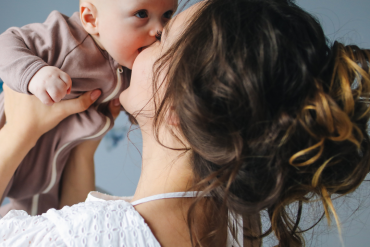
Reclaim Confidence with a Tummy Tuck or Breast Lif...
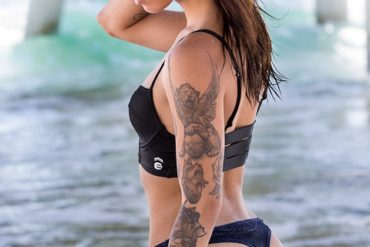
Liposuction vs. Tummy Tuck: Which is Most Effectiv...
